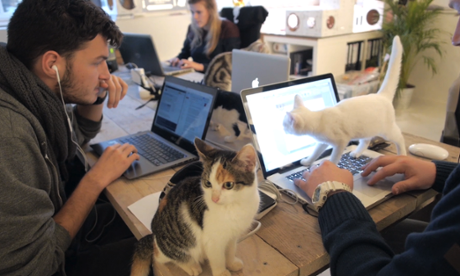
It’s 2.30pm. You’ve got a half-eaten sandwich in front of you, an ever-expanding to-do list and a constant flow of emails all fighting for your time. The afternoon slump is a familiar feeling for many of us; that point in the day when you suddenly run out of steam and no matter how long you stare at the screen, all you end up with is a pile of half-finished tasks and a rising sense of panic.
When the slump hits, your automatic reaction may be to solve the problem with either caffeine or sugar. A quick coffee or a sugary snack may wake you up and increase alertness in the short term, but it’s very much a temporary solution. So what are the alternatives?
Understand your energy patterns
The first thing to consider is whether your personal energy pattern fits with your current working schedule. Charlotte Sweeney, founder of Charlotte Sweeney Associates, works with clients to help them consider “managing their energy rather than managing their time”.
She recommends rating energy levels on a scale of one to 10 for every waking hour of the day. “One being that you could happily go back to bed and 10 being full of energy and on fire,” she explains. “By doing this over the course of a week you will start to see a pattern of when your energy levels are naturally high and when they are low.”
Understanding your natural highs and lows means you can use your time more effectively and find a working rhythm that suits you. “Schedule your most important work into the times when your energy is at its highest,” Sweeney advises.
“During the times that your energy is low, either get through your ‘low-value work’, such as replying to emails that don’t need a huge amount of brain power, or take yourself out of the office and go for a walk to the gym. Just do something different.”
Create an office space that inspires
In-house yoga classes are a fairly common sight in larger corporations, but yoga isn’t the only form of exercise that can boost your energy levels and bring benefits to the business. Dancer Karis Scarlette of En Avant teaches ballet to staff at a number of large companies, including retail giant Asos. Scarlette explains that due to the discipline and range of movement involved, “pure classical ballet technique is the ultimate antidote to a high pressured, stressful working environment.”
Jimmy Creagan, founder of Jimmy’s Iced Coffee, believes that business owners have a responsibility to create an office environment that inspires and motivates employees.
“We spend such a vast amount of time at our office so it needs to be great place to be,” he tells me. “We’ve got a skate ramp which doubles up as our meeting room and dining table. It looks and feels great and most Thursdays we hold skate evenings for people to come and ride while we wrap up the day with a cold beer.”
Meanwhile Thomas Vles, founder of Poopy Cat, has a group of employees dedicated to keeping the business on brand and motivating the entire team: the office cats.
“It’s well-documented that animals in the workplace are good for stress relief and creativity,” he says. “For us, having cats in our office means we have a dedicated focus group who are constantly there to provide us with real-time feedback. Beyond this, we like to keep our brand irreverent and fun and the cats being there allows my team to take time out to stay at the heart of the matter.”
Detox your desk
If your desk is a growing nightmare of paperwork, packaging and post-its, then it’s time for a desk detox. File, organise or throw away everything that is cluttering your work surfaces.
Once you’ve cleared a little space, you can fill it with things that will positively affect your working day. A plant is the obvious first step. Research carried out by Dr Virginia Lohr of Washington State University demonstrated that plants not only help to lower stress levels in the workplace, but also boost productivity. The study showed that participants with plants in their working environment were 12% more productive than those without.
Get up, stand up
Sitting slumped at a desk all day can cause a multitude of health problems that can make it difficult to focus on the task in hand. Back pain, repetitive strain injuries and stiff muscles are just some of the side effects of our traditional working setup.
Novelist and screenwriter Matthew Hall suffered from recurrent back pains that frequently interrupted his working day. “My local osteopath explained how sitting down at a desk for hours tightens up all the muscles around the pelvis as well as quads and hamstrings. Worse, sitting with a slight slump puts huge pressure on the discs between the vertebrae in the lower back,” he explains.
Hall now alternates between a Bambach Saddle Chair and a standing desk, which he says have cured not only his back but also the injuries he has sustained as a runner. This new setup also helps to sharpen focus and minimise distractions.
“Some days I only stand. I just edited my last novel only standing,” he says. “Standing lets you wander around and prevents you from ever feeling drowsy. I haven’t dosed at my desk in over four years, or even come close to it.”
Looking for a job? Browse Guardian Jobs or sign up to Guardian Careers for the latest job vacancies and career advice

